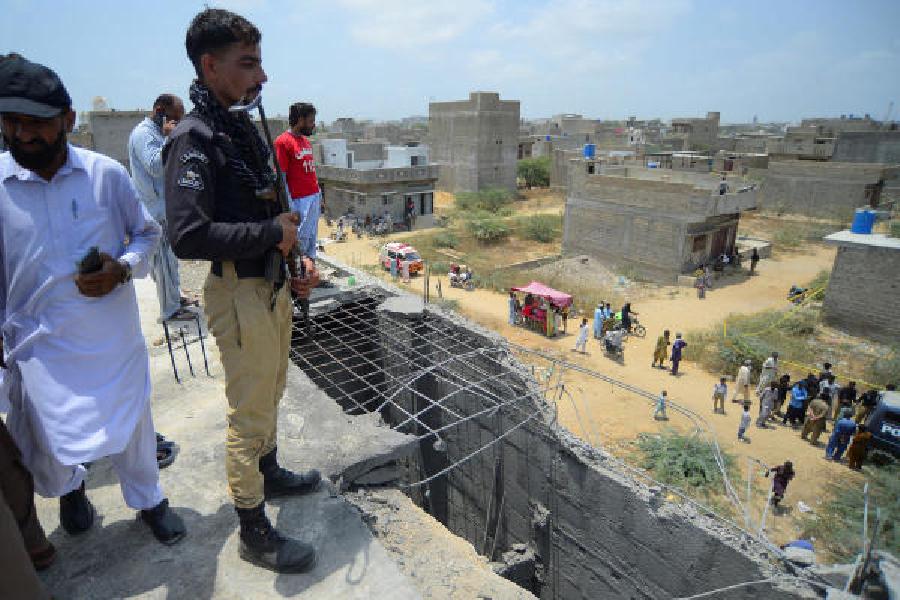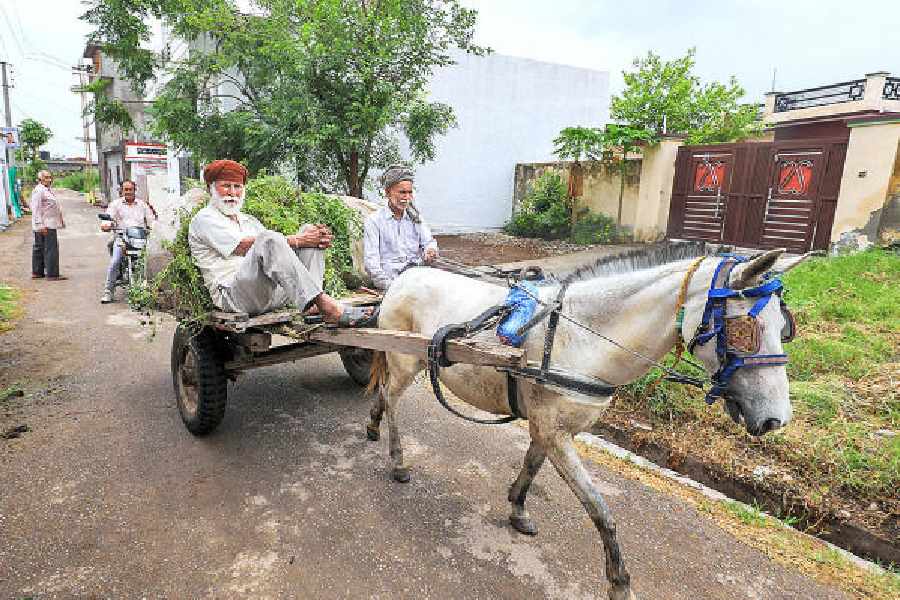 |
| Soumitra Chatterjee and Sugata Bose in front of Netaji Subhas Chandra Bose’s car at Netaji Bhavan. Picture by Anup Bhattacharya |
Two brothers of the Bose family came together to speak at the launch of a book on their grandfather written by their father Sisir Kumar Bose.
Sarat Chandra Bose: Remembering My Father was first published 25 years ago and now Niyogi Books has brought out a new edition of the book, adding more photos and documents, to mark the 125th birth anniversary of Sarat Chandra Bose. The first edition had been formally released in September 1988, on Sarat Bose’s 99th birthday.
“The first copy of the new edition was presented to President Pranab Mukherjee at Rashtrapati Bhavan on August 25. The book is being officially launched today,” said Krishna Bose, chair of the Council of Netaji Research Bureau and wife of Sisir Bose.
The book was officially launched by actor Soumitra Chatterjee, who said: “We have been hearing stories about the Bose family, particularly of Sarat Bose and Subhas Bose since we were young but nothing had been documented then. People had started forgetting Sarat Chandra Bose. It is important that Sarat Chandra Bose be re-evaluated.”
Sumantra Bose, professor at London School of Economics and a scholar on conflict resolution, spoke on Sarat Bose’s United Bengal Plan while brother Sugata, Gardiner professor at Harvard University, spoke on the father-son relationship.
Sumantra had first read the manuscript 25 years ago. “I remember my father typing on his Olivetti typewriter that belonged to my mother. So I may have been the first reader of this book. When my father gave me the chapters of the manuscript as he finished them, I gave him my feedback. I became aware of the United Bengal Plan then, the last-ditch effort to avert Partition of Bengal,” he said, opening the discussion.
“I began to study the book as a post-graduate student in accommodation and conflict resolution in deeply divided societies. The United Bengal Plan tried to solve problems in a deeply divided society. Had the United Bengal Plan succeeded, it may have been the first agreement of power-sharing between majority and minority communities,” Sumantra said.
Sugata focussed on the human dimensions of the book. “One of the most beautiful parts of the book were the letters between Sarat Bose and his wife Bivabati written in 1912-13. We are more familiar with the letters between Subhas Bose and Sarat Bose. But these letters are quite poignant,” he said. Since Sarat Bose was a busy man, there was not much interaction between the father and the children. “But when they went for their holidays to Kurseong, Sarat Bose would instruct his children on what to read and study.”
The book also includes a vivid description of January 16, 1941, the Great Escape, when Sisir Bose helped his uncle Subhas Chandra Bose plan and execute the escape from India. “He drove Netaji from Calcutta to Gomoh on the first leg of his epic journey,” said Sugata.









